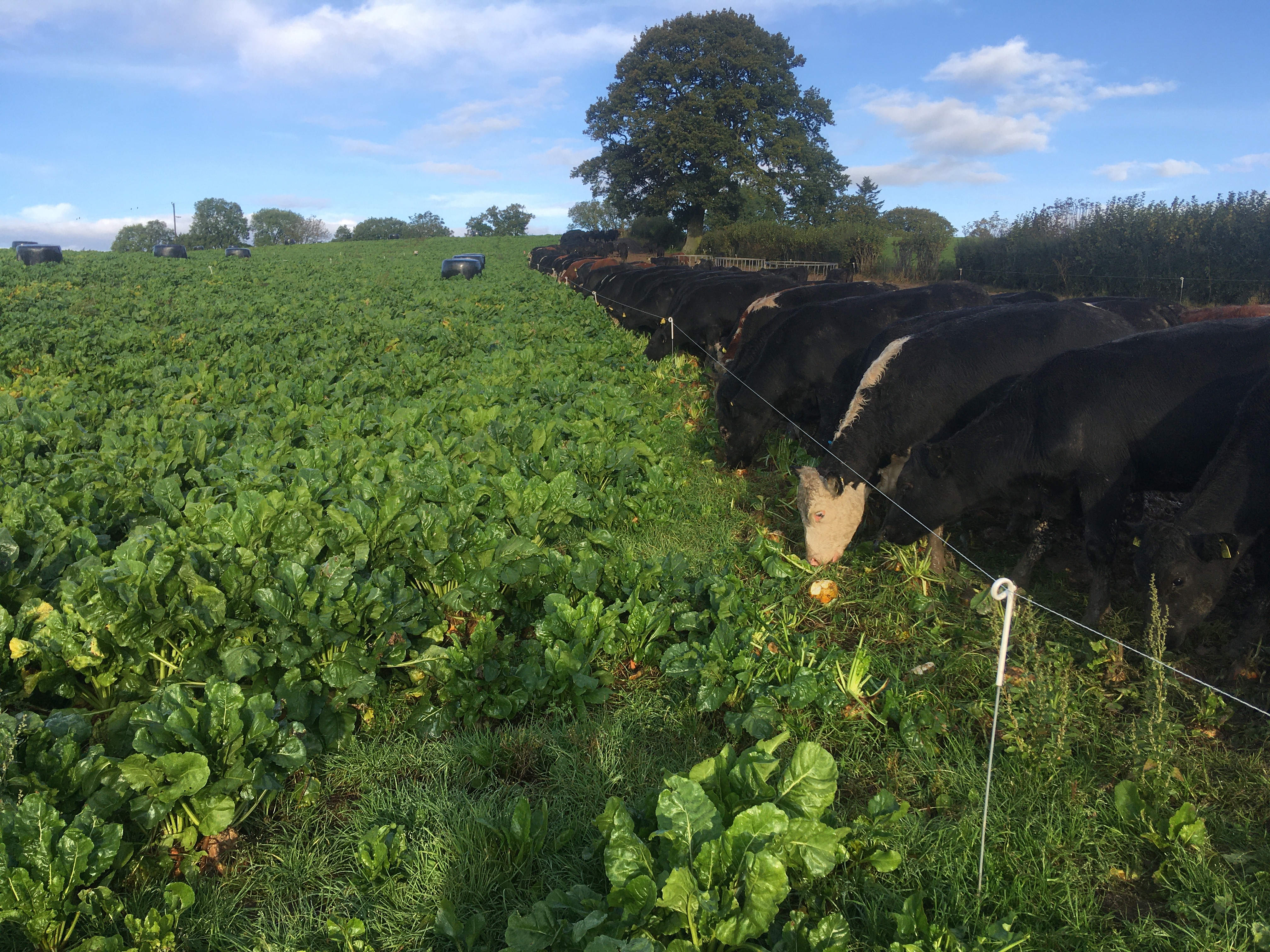- Home
- Knowledge library
- Paddock design and transition of cattle to fodder beet
Paddock design and transition of cattle to fodder beet
Independent grazing and forage consultant, Marc Jones, shares his top tips for transitioning cattle onto fodder beet.
As we approach the winter, many farmers will be starting to think about transitioning their cattle on to fodder beet crops. This is an essential process for cattle grazing the crop and the management of the transition could make or break the performance of the cattle on the crop.
Poor paddock design and incorrect transition management can result in a large variation in body condition score in adult cattle and a large range in individual performance for growing and finishing cattle. In extreme cases, cattle may need to be removed from the beet and even deaths from acidosis can occur.
There are several practical steps which can be used to ease management and help the transition process, to allow the cattle to increase their intakes of fodder beet to ad libitum and maximise performance. These are:
1. Setting up of the paddock
- Ensure that for every animal, you allow one linear metre per head along the feed face. So, if 100 cows were to graze the crop there would be a feed face of 100 metres. This prevents the bullying of shy feeders or smaller cattle
- Make sure there is a headland of at least six metres where you aim to start grazing. This can be a grass headland or a headland where beet has already been lifted. This will prevent the cattle from pushing through the electric fences
- Use temporary water to ensure you have access to water where required
2. Measuring the yield
- Generally, crops in the UK produce approx. 20 tonnes of DM/ha, although, this yield should be measured before grazing
- At row widths of 50 cm, one square metre would contain two rows and this would yield 2 kg/DM per m² for a 20t crop. Therefore, if the cattle were allocated one linear metre each and one row, they would be allocated 1 kg/DM
3. Starting the transition process
- Aim to allocate 1 kg/DM per head for adult cattle and for cattle over 400 kg on day one. For 100 cattle this would be 100 metres and one row
- Ensure the cattle are hungry going onto the crop and keep them on the crop for a minimum of three hours to ensure they all eat it
- Repeat this process of one row each day until you are happy that all cattle are eating the bulb. This process may take 3‒7 days
4. Increasing the amount fed
- Aim to increase the fodder beet fed by one row or 1 kg/DM every other day
- Continue to increase until the cattle are ad-lib
- Ensure 2 kg of roughage is allocated per head once the cattle are ad-lib
These steps will ensure that the transition process runs smoothly and cattle performance is maximised throughout the winter period.
Note: For younger cattle (200‒400 kg) the target would be to start at 0.5 kg/DM per head/day with the aim of increasing this every other day in 0.5 kg increments. They are likely to be slower eating the bulbs initially and feeding some beet at grass, before starting the transition, will aid the process.
For more information join Marc and Dr Jim Gibbs, fodder beet grazing specialist from New Zealand for a series of specialist webinars aimed at maximising both livestock and fodder beet performance on farm.


